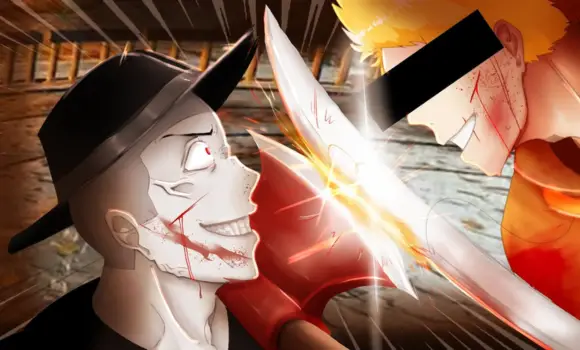When I first started playing Dueling Grounds, most of my fights ended the same way: I swung first, traded poorly, and watched my health disappear before I could react.
The game looks simple, but the combat system expects you to understand timing, spacing, and commitment very early on.
Once I slowed down and treated each fight like its own interaction instead of a race to click first, the game immediately felt more consistent.
Below is the approach I learned from trial, error, and a lot of respawns.
Also read: Dueling Grounds Tier List
Weapons and Playstyles
Each weapon isn’t just different damage — it encourages a different rhythm.
| Weapon | Speed | Damage | Range | Notes From Experience |
|---|---|---|---|---|
| Katana | Medium | Medium | Medium | Easiest to learn. Good for developing spacing fundamentals. |
| Dual Daggers | Very Fast | Low | Short | Works only if you stay close and keep movement active. Relies on constant pressure. |
| Naginata | Slow | High | Long | Strong if you play patient. Teaches timing and distance control extremely well. |
When I was still getting used to the game, the Katana helped me understand spacing and tempo.
Later, switching to Dual Daggers taught me how to engage and disengage quickly.
Eventually, the Naginata made matchups feel strategic instead of frantic.
If you’re unsure where to start, the Katana is a reliable baseline.
Movement Basics
Movement is where most learning actually happens. The goal is not to run constantly or stand still. It’s to control distance.
The general rhythm that helped me:
- Close distance slowly, don’t sprint at your opponent.
- Jump diagonally rather than straight upward. This avoids predictable arcs.
- After every swing, take a small step backward to reset spacing.
What this does:
- Keeps you close enough to create pressure
- Prevents getting caught in repeated trade swings
- Makes your direction less predictable
Once I stopped holding W aggressively, I stopped getting hit repeatedly in close range.
Light and Heavy Attacks
Light attacks and heavy attacks are not interchangeable. They serve different purposes.
| Type | Speed | Damage | Purpose |
|---|---|---|---|
| Light Attack | Fast | Moderate | Used to start a sequence and test spacing. |
| Heavy Attack | Slow | High | Used only after confirming you are safe to commit. |
How I Learned to Use Them Together
I began trading more consistently once I used this pattern:
- Step into range
- Light Attack once or twice to check distance
- If the opponent delays or hesitates, then use Heavy Attack
Heavy should be the response to an opening, not the opening itself.
Parrying (Timing Instead of Reaction)
Parrying is done with F, but pressing F early or repeatedly rarely works.
What helped me more than anything was watching body movement, not weapon animation.
Indicators the opponent is committing to an attack:
- Torso leans forward
- Feet plant or stop shifting
- Jump arc ends and they descend toward you
Once I started pressing F only when I saw those movement cues, parries became consistent instead of accidental.
A successful parry:
- Cancels the opponent’s attack string
- Opens a safe window to hit back
- Often flips momentum of the entire fight
I treated parries like punishes, not guesses.
Ultimate Ability (Red Meter)
That red bar under your health unlocks an ability, but using it immediately usually wastes it.
I found the best timing for using Ult is:
- Right after a successful parry
or - When the opponent is recovering from a missed heavy attack
Because at those moments:
- Your opponent cannot dodge effectively
- Your ability almost always lands
I stopped losing fights I should have won once I used Ultimate as a finisher, not a gamble.
Training Routine That Helped Me Improve
Instead of trying to get better at everything at once, I focused on one skill per match:
| Match Number | Focus | What to Pay Attention To |
|---|---|---|
| Match 1 | Only spacing | Step in → swing → step back. Nothing else. |
| Match 2 | Only parry timing | Do not swing first. Just wait and parry. |
| Match 3 | Light into Heavy control | Light → Light → pause → Heavy. Observe how players respond. |
This kept each fight structured instead of overwhelming.
Choosing Which Weapon to Main Going Forward
If your playstyle leans toward:
| Preference | Best Weapon | Reason |
|---|---|---|
| Balanced / Learning fundamentals | Katana | Predictable timing and medium reach make it ideal for practice. |
| Aggressive up-close pressure | Dual Daggers | Frequent light attacks keep pressure continuous. |
| Methodical spacing and control | Naginata | Punishes mistakes and teaches distance management. |
Personally, Naginata gave me the most long-term improvement.
But Daggers are extremely strong once movement becomes second nature.
Closing Notes
Dueling Grounds rewards players who pay attention to distance and timing, not just reaction speed.
Once I slowed down, watched the opponent, and stopped swinging first out of panic, my fights became predictable and winnable. The game doesn’t require hyper speed — it rewards deliberate rhythm.
Also, if you want to automate parrying, you can use the new Dueling Grounds script for quick progress.
Visit our blog for more guides

